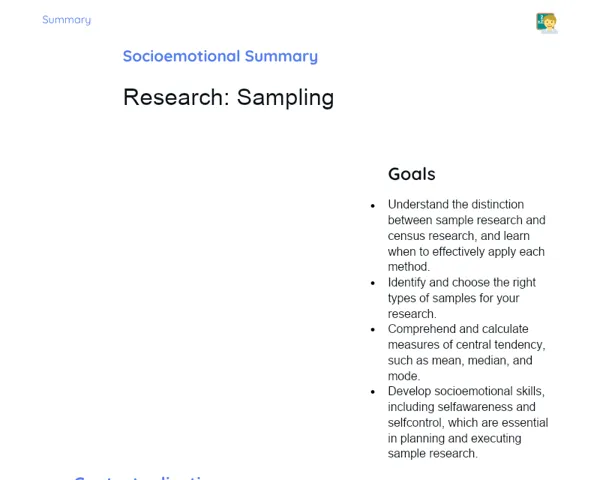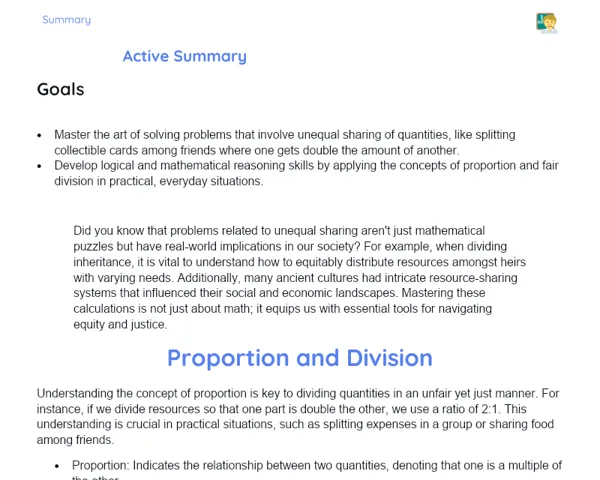Summary Tradisional | Perfect Squares
Contextualization
In mathematics, perfect squares are numbers that can be expressed as the square of an integer. Essentially, when we take any integer and multiply it by itself, we get a perfect square. For instance, the numbers 1, 4, 9, 16, and 25 are perfect squares because we derive them from multiplying 1x1, 2x2, 3x3, 4x4, and 5x5 respectively. Recognizing these numbers is vital in various branches of mathematics, like simplifying algebraic expressions and solving quadratic equations.
Understanding perfect squares is crucial for tackling a range of mathematical challenges. For instance, in the process of simplifying expressions or solving quadratic equations, being able to identify a perfect square can greatly aid our efforts. Moreover, perfect squares find practical utility in areas like architecture, where it's important to calculate the area of square spaces, and in technology, where screen resolution often uses perfect squares to ensure crisp and clear images.
To Remember!
Definition of Perfect Squares
Perfect squares are numbers that can be expressed as the square of an integer. This means that if we multiply any integer by itself, we arrive at a perfect square. For example, 1, 4, 9, 16, and 25 are perfect squares as they result from 1x1, 2x2, 3x3, 4x4, and 5x5 respectively.
Being able to identify perfect squares is a necessary skill in mathematics, especially when we simplify algebraic expressions and solve quadratic equations. Perfect squares have traits that make it easier to manipulate expressions and solve problems. For example, recognizing a perfect square helps simplify the factoring of an expression.
Additionally, perfect squares play a key role in various practical applications. In architecture, for instance, calculating the areas of square spaces is crucial, and in technology, screen resolutions are often articulated in terms of perfect squares to achieve sharp and clear images.
-
Perfect squares arise from squaring an integer.
-
Examples of perfect squares include: 1, 4, 9, 16, 25.
-
Significance in simplifying algebraic expressions and solving quadratic equations.
Identifying Perfect Squares
To determine if a number is a perfect square, we check if its square root is an integer. The square root of a number is the value that, when multiplied by itself, gives the original number. For instance, the square root of 25 is 5, which is an integer, thus 25 is a perfect square.
However, not every number has an integer square root. For example, the square root of 50 is not an integer, making 50 not a perfect square. The ability to identify perfect squares is useful across different areas in mathematics, such as algebra and geometry, as it allows for easier simplifications and problem-solving.
This skill is particularly helpful in solving quadratic equations where recognizing perfect squares can aid in the factoring process, which in turn simplifies the task of solving these equations.
-
Perfect squares have integer square roots.
-
Example: the square root of 25 is 5, classifying 25 as a perfect square.
-
Significance in simplifying expressions and solving quadratic equations.
Notable Product of Perfect Squares
The notable product of perfect squares is a formula that describes how to expand the square of a sum. The formula is (a + b)² = a² + 2ab + b². This formula comes in handy for simplifying expressions and resolving mathematical problems, as it allows for rewriting expressions in a more manageable manner.
For example, expanding (x + 3)² using the notable product formula gives us x² + 6x + 9. This kind of expansion eases the problem-solving process and simplifies algebraic expressions. Mastery of this formula is vital for students since it frequently appears in algebra and geometry problems.
Understanding and applying the notable product of perfect squares is also beneficial in solving quadratic equations. For instance, the equation x² - 4x + 4 can be rewritten as (x - 2)², which simplifies finding its solutions.
-
Notable product formula: (a + b)² = a² + 2ab + b².
-
Example: (x + 3)² = x² + 6x + 9.
-
Usefulness in simplifying expressions and resolving quadratic equations.
Application in Mathematical Problems
Perfect squares are often employed in simplifying algebraic expressions and tackling mathematical problems. For instance, when solving a quadratic equation, being able to spot a perfect square can ease the factoring process. This is particularly beneficial in algebra, where mastering the art of factoring expressions is a foundational skill.
Furthermore, perfect squares have practical applications across various domains. In architecture, for instance, computing the area of square spaces is common and necessitates a solid understanding of perfect squares. Similarly, in technology, screen resolutions are frequently described in terms of perfect squares to provide sharp and clear images.
Grasping and utilizing the concept of perfect squares empowers students to resolve problems more efficiently and fosters a deeper understanding of mathematics. This capability includes recognizing patterns and simplifying complex expressions, which are crucial skills for success in mathematics as well as in other disciplines.
-
Useful in simplifying algebraic expressions and addressing equations.
-
Practical importance in architecture and technology.
-
Facilitates efficient problem-solving and comprehension of mathematical concepts.
Key Terms
-
Perfect Squares: Numbers that are the square of an integer.
-
Square Root: A value that results in the original number when multiplied by itself.
-
Notable Product: A formula used to expand the square of a sum, (a + b)² = a² + 2ab + b².
-
Algebraic Expressions: Combinations of numbers, variables, and mathematical operations.
-
Quadratic Equations: Second-degree polynomial equations that can be effectively solved using perfect squares.
-
Factoring: The method of breaking down an expression into parts that, when multiplied, recreate the original expression.
Important Conclusions
In this lesson, we delved into the concept of perfect squares, understanding that they are numbers expressible as the square of an integer. We identified these numbers by checking if their square roots are integers, which aids in various mathematical spheres such as simplifying algebraic expressions and solving quadratic equations.
We also explored the notable product of perfect squares, applying the formula (a + b)² = a² + 2ab + b² to simplify expressions and resolve mathematical challenges. This skill is essential for manipulating algebraic forms and for more efficiently solving quadratic equations.
Lastly, we recognized that perfect squares hold practical applications in fields such as architecture and technology, where knowledge of these concepts significantly assists in everyday problem-solving. Grasping and employing perfect squares allows students to deepen their mathematical understanding and sharpen their problem-solving skills.
Study Tips
-
Review examples of perfect squares and practice determining if a number is a perfect square by checking its square root.
-
Practice expanding expressions using the notable product of perfect squares, such as (a + b)² = a² + 2ab + b², to reinforce your understanding.
-
Work on mathematical problems involving perfect squares and quadratic equations to apply the learned concepts and enhance your skills.



